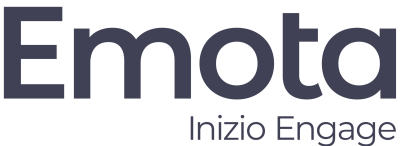Ask Joanna
The CPO's Corner

Question:
How can I prepare for the disruption headed my way? Part 2 – RPA
Joanna's Answer:
In the last column, we talked about preparing for disruption from Artificial Intelligence. This column focuses on another disruptor - Robotics Process Automation (RPA).
RPA is a subset of AI. Twenty years ago, the word “robot” conjured up visions of an automobile assembly line where robots replaced people doing repetitive tasks. Today, RPA uses software robots to complete softer tasks like data entry. Margaret Rouse of WhatIs.com defines RPA as “the use of software with artificial intelligence (AI) and machine learning capabilities to handle high-volume, repeatable tasks that previously required humans to perform. These tasks can include queries, calculations and maintenance of records and transactions.”
So a company might use an AI application to complete a complex analysis, and RPA to automate a repetitive task. An insurance company, for example, receives thousands of applications every day and might use RPA to get new client information to all the policies that the individuals have signed up for. A large company might use RPA for new employee onboarding or to update all benefit streams when an employee’s address changes.
I think of AI as a professor who helps me get to a better answer when the problem is quite complicated. RPA is a workhorse. It handles tasks that someone in my company has to do over and over again. RPA is also “smart” – it can see trends and correct errors.
Over the last fifteen years, companies reduced costs by moving offshore with simple repetitive tasks performed in high volume. Those are the kinds of tasks where the next logical evolution is to RPA. Think about the implications. These operations centers are located across the globe in low-wage areas. Now there is a further opportunity for cost reduction by implementing RPA. Huge implication for those centers – because if a machine is doing the work, does it need to be offshored? Probably not.
How do you prepare for a world in which RPA is commonplace? Start with your contracts and with an awareness of how your suppliers are using RPA. SLA’s change when a machine is performing the task instead of a person – the number of actions performed in a day should be markedly different. Price adjustment calculations based on the cost of labor need to be reworked when the labor goes away. In fact, as RPA becomes more sophisticated the efficiency should increase and the costs should actually go down over time. Offshore suppliers who built large facilities will have the burden of excess property to deal with, and a good procurement professional will be proactive to make sure that their firm doesn’t bear the burden.
About Joanna

Joanna Martinez is a global procurement / supply chain leader and the founder of Supply Chain Advisors LLC. She is a frequent lecturer and blogger on procurement topics and also provides coaching, strategy development, training, and cost reduction opportunity assessment. Her clients range from Fortune 100 companies to technology startups.
As either regional or global CPO, Joanna has led transformation initiatives for companies in many different sectors: among them Johnson & Johnson (consumer products), Diageo (beverage), AllianceBernstein LP (financial services) and Cushman & Wakefield (real estate services, property management). She has also held client-facing roles, effectively giving her the opportunity to “sit on both sides of the table”.





























